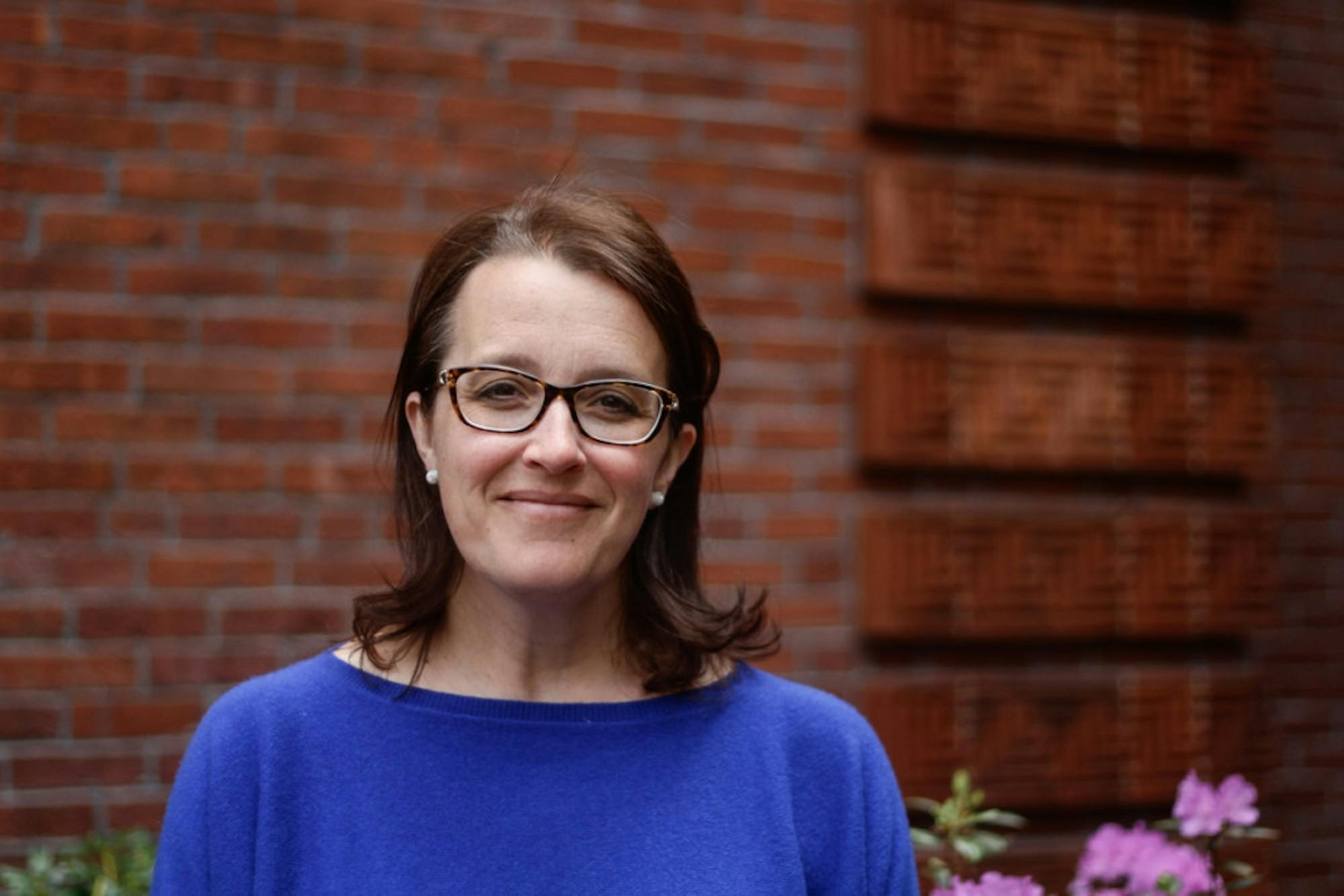This academic year saw the adoption and subsequent signing of what a Dec. 16, 2015 Atlantic article called “one of the most important piece of international diplomacy in years.” At the 21st Conference of Parties in Paris in Dec. 2015, 195 nations finally hammered out a deal on international cooperation on greenhouse gas mitigation; last month, on Earth Day, 175 nations signed it. If it remains intact, it could put the world on a path to getting serious about limiting emissions, and while many scientists say the agreement doesn’t go nearly far enough, most still see it as climate policy’s most important moment to date.
Hopes for the deal would have been slim, however, were it not for the success of another set of talks held a year prior. In November 2014, after nine months of bilateral talks, the United States and China announced joint action to mitigate their countries' environmental impacts, signaling a mutual commitment to acting on climate change. The two countries’ combined greenhouse gas emissions account for more than a third of the global total. Without the say-so of either one, international deals tend to be ineffective, like the Kyoto Protocol post-1998, which wasn’t ratified by the United States.
Kelly Sims Gallagher, currently a professor of energy and environmental policy at Tufts’ Fletcher School of Law and Diplomacy, was one of the key members of the United States’ team during the talks with China. At the time of the negotiations, she was serving both in the White House as a senior policy advisor in its Office of Science and Technology Policy and in the State Department as a senior China advisor with its Special Envoy for Climate Change.
“The fact that [the US and China] came together [in 2014] gave the world a lot of hope that we could get a global agreement,” Gallagher said. “It didn’t guarantee it, but it was a big infusion of excitement and energy, and the plausibility of getting an agreement in Paris suddenly grew dramatically.”
Gallagher is an expert on the Chinese energy system, a subject of vital importance when it comes to global warming policy. China surpassed the United States as the world’s largest emitter in 2007, and today it produces about twice as much CO2 as the US does.Gallagher, who recognized China’s importance early on, studied US-China cooperation on energy for her master's degree at the Fletcher School. In 2003, she completed her doctorate at Fletcher as well,studying the Chinese automotive industry.
“At some point, I realized how important China was going to be in the future just because of its sheer size,” Gallagher said. “I decided in graduate school to focus on China … my hope and ambition was to become really more of an expert on the Chinese energy system.”
After spending 7 years at Harvard, first as a predoctoral research fellow at Harvard’s Belfer Center and then as a lecturer, she returned to Fletcher as a faculty member in 2009. Her involvement with the White House and the State department began in 2013, when she sent them a memo advocating for an agreement with China.
“Both countries were domestically doing a lot of progressive stuff for climate policy, but it hadn’t really translated into international agreements … I sent in a memo recommending a US-China agreement in November 2013 — both [to] the White House and the State Department — and they invited me to come down and talk about it and defend [it],” Gallagher said. “I think it played some role in their decision to do this with the Chinese.”
Once she proposed the agreement to China, who supported it, she was brought on by the White House and the State Department in an advisory role.
“The negotiations were led in the White House by [former counselor to President Obama] John Podesta and in the State Department by [former U.S. Special Envoy for Climate Change] Todd Stern, and I was an advisor to both of them,” Gallagher said. “There was a relatively small group of people on the US side.”
The 2014 deal gave the United States a target of a 26 to 28 percent reduction in their emissions by 2025, relative to 2005 levels. China aims to peak their emissions around 2030; this marked the first time they’d agreed to set a time at which their emissions will begin to reduce.
Some weren’t excited about the deal. At the time, Senator Mitch McConnell lamented that “it requires the Chinese to do nothing at all for 16 years.” His complaint represents a common point of resistance in the United States to bilateral action on greenhouse gas emissions with developing countries: there’s an idea that the measures will do nothing but harm the US economy while China and India get a free ride, as they spend nothing on mitigation and continue to pollute. Gallagher, however, said that when it comes to climate policy, China is more progressive than they’re given credit for.
“In terms of policy, the Chinese are definitely moving faster than we [the United States] are,” she said. “There’s no question they’re building renewable energy faster than any other country in the world.”
China has announced that it plans to triple its installed solar power capacity by 2020, according to a March 21 Bloomberg article. Last fall, in the lead-up to Paris, they announced plans for the implementation of a nationwide carbon cap and trade system, according to an Oct. 6, 2015 piece in Foreign Policy. An April 25 New York Times article noted that China has halted plans for new coal-fired power stations in many parts of the country.
“The challenge for China is that their existing system relies on coal much more heavily than ours does, about 70 percent of their existing energy system,” Gallagher said. “Somehow, they have to transform their existing energy infrastructure in order to achieve reduction … we don’t have that challenge because coal only accounts for 20 percent of electricity in the United States.”
A Dec. 10, 2015 US News article noted that China’s push to cut carbon emissions has been largely driven by its staggering nationwide pollution crisis. An August 2015 paper released by members of California research organization Berkeley Earth found that outdoor air pollution contributes to the death of 1.6 million people every year in China.Gallagher said that China came to the 2014 talks ready to make a deal.
“It was clear throughout the negotiations that both sides were interested in reaching an agreement,” she said. “This was not a situation of a zero sum game, where you’re trying to divide up a pie, but it was rather a situation where we both wanted to exercise and demonstrate leadership.”
With the success of the US-China talks, the groundwork was laid for success in Paris. Gallagher attended the talks, which ran from Nov. 30 to Dec. 12 of last year, along with a Tufts delegation of 10 students and faculty organized and supported by the Tufts Institute of the Environment.
“You have the actual negotiations taking place, then you have what you call the country pavilions … and then there was a whole NGO space, where there were a whole lot of side events, and people hosting workshops and panel discussions and so forth,” Gallagher said. “Anyone could go to the NGO pavilion, [but] you had to have a special pass to get into the actual negotiations, and that’s what we had, we had 10 passes.”
Essentially, the Paris agreement aims to hold the increase in the global average temperature to “well below” 2ºC above pre-industrial levels. Each country decides their own commitments towards reaching this goal: their “Nationally Determined Contribution” (NDC), which sets their emissions target. These aren’t bound by international law.
Gallagher said that the agreement is impressive but doesn’t go far enough as it stands.
“If all of the NDCs are adhered to, there will be a significant reduction relative to business as usual, but it will not be enough,” she said. “It was a great step forward, but it took too long to reach and we still have a very long way to go to be able to limit warming to two degrees centigrade … I’m so honored to have been part of [the 2014 agreement] but I also find my self feeling very sober about how much work there is to do.”
Gallagher is hopeful about the fact that the Paris agreement allows for a spectrum of responses based on countries’ abilities, rather than simply dividing nations into those with and without binding commitments, as the Kyoto Protocol did.
“It is true that the already-industrialized countries, including the U.S., bear most of the historical responsibility for the cumulative emissions in the atmosphere," she said. "They obviously bear a responsibility to act first in terms of reducing emissions, and in fact that’s what the Kyoto Protocol was supposed to do. Now we’re moving into a world where it's less black and white.”
Here on campus, during the first week of the Paris conference, Tufts Climate Action (TCA) held a “reality week,” a series of events that focused on climate change and climate justice, according to a Dec. 8, 2015 article in the Daily. TCA supports Tufts’ divestment from fossil fuel companies. Debate over divestment has been a contentious issue on campus for years.
Gallagher said she has a nuanced opinion on divestment.
“I do believe we should be moving away from fossil fuels over time, and especially away from coal, and I positively support a investment strategy in clean energy, but I believe that some companies are trying to diversify, and for those companies that are doing so, it doesn’t make sense to fully divest from them,” she said. “In other words, we should support those companies that are trying to make that transition [to renewable energy] and who are not actively undermining climate policy.”
She encouraged Tufts students to find work in the fields of clean energy and climate policy, which she said are growing quickly.
“Its just so different from before,” she said. “There wouldn’t have been those private sector jobs when I was graduating from college, and that’s a big transformation in this job market, clean energy and climate, so it’s a really exciting time to be in this space as a student.”
Rhetoric about climate change has become increasingly somber as the science has become clearer. Warming effects like sea rise, stronger storms and droughts are expected to create millions of refugees within the century. The Intergovernmental Panel on Climate Change’s 2014 report said that the earth is locked on an “irreversible” course of climate disruption. Though she acknowledged that huge challenges await future negotiators and policymakers, Gallagher remains optimistic about the future of the world.
“Think how much has changed in just a few years," she said. "We have the two largest emitters having made commitments to reduce their emissions, and even more than that, agreeing to cooperate with each other in doing so, we have an international agreement that has just been signed by 175 countries; we have renewable energy costs that have come down dramatically. I believe that as the impacts begin to show themselves more we’ll have more popular pressure for action, and I think that we’ll continue to see international leadership because it's morally the right thing to do … I don’t think we can completely stop climate change, but we can slow it down and avoid the worst of it.”
When it comes to what drives her to keep fighting for climate policy, Gallagher said that she’s motivated by the moral imperative of leaving a better world.
“I think when I first realized that, through ozone depletion and climate change, we were literally altering the course of nature, that profoundly disturbed me … ethically that seemed wrong,” she said. “I feel a great sense of urgency to try and limit the impacts of climate change, even for the foreseeable future of my own lifetime.”






